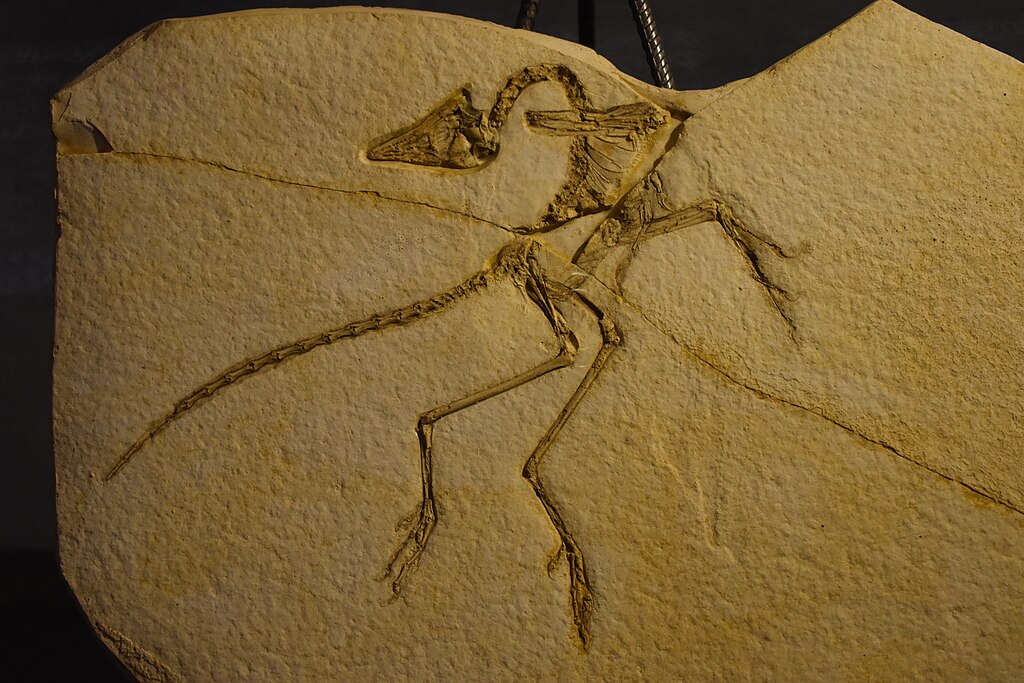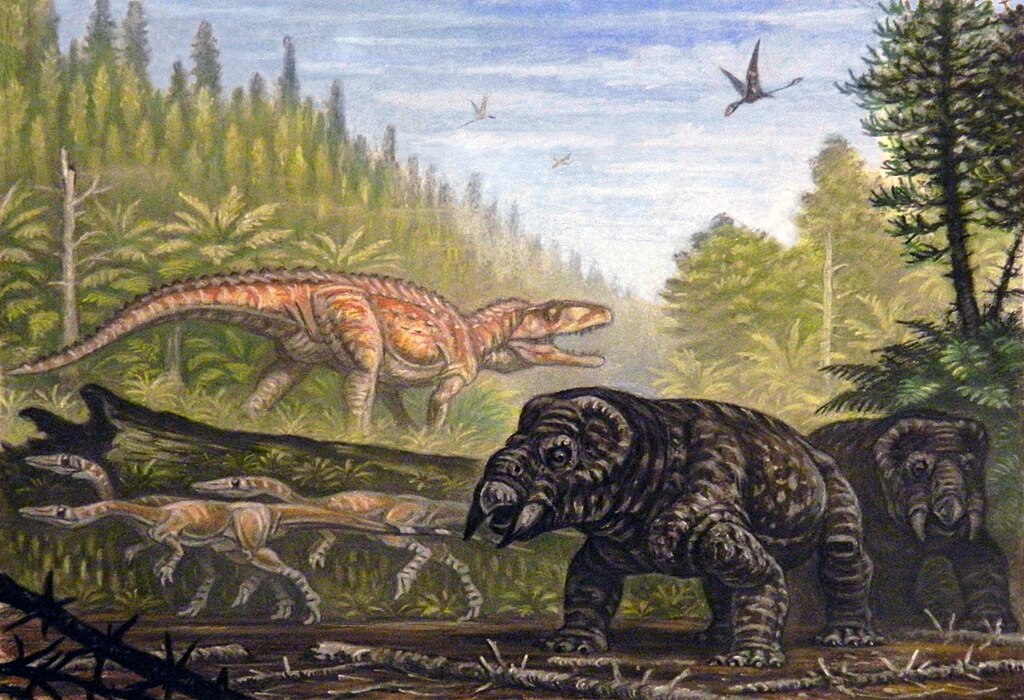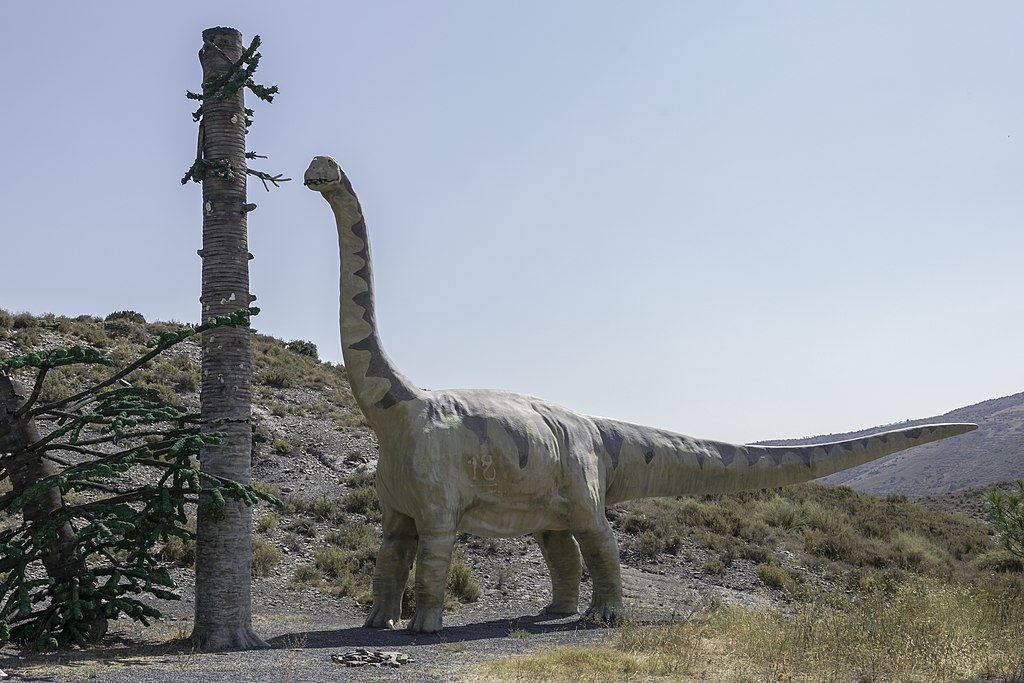In the vast realm of paleontology, certain discoveries stand out not for their completeness or clarity but for their bewildering, contradictory nature. These enigmatic specimens have earned the nickname “Frankenstein fossils” – paleontological puzzles that combine features from different animal groups in ways that challenge our understanding of evolutionary relationships. Like Mary Shelley’s fictional creation, these fossils appear to be assembled from disparate parts, creating classification nightmares for scientists. While some have eventually found their proper place in the tree of life, others continue to defy categorization, representing some of the most fascinating mysteries in the fossil record. Let’s explore these biological conundrums that have confounded experts for decades.
The Origins of Paleontological Puzzles

Paleontology has always dealt with incomplete information – fragments of ancient life preserved through geological processes. When scientists discover fossils with seemingly contradictory features, they face significant challenges in classification. These “Frankenstein fossils” emerge from various circumstances: incomplete preservation, convergent evolution (where unrelated species develop similar features), transitional forms between major groups, or simply organisms that evolved unique combinations of traits. In some cases, mistaken reconstructions have created artificial monsters by combining fossils from different species. The history of paleontology is littered with such examples, from the infamous “Piltdown Man” hoax to more innocent misinterpretations of fragmentary remains. These puzzling specimens often become scientific battlegrounds, with competing theories attempting to resolve their contradictory nature.
Tullimonstrum: The Tully Monster Mystery

Perhaps no “Frankenstein fossil” has generated more heated scientific debate than Tullimonstrum gregarium, commonly known as the Tully Monster. This 300-million-year-old creature from Illinois features a torpedo-shaped body, stalked eyes, and a long proboscis ending in what appears to be a toothed claw. Since its discovery in the 1950s, scientists have variously classified it as a worm, a mollusk, an arthropod, and most recently, as either a vertebrate related to lampreys or an invertebrate related to mollusks. A 2016 study suggesting vertebrate status sparked intense controversy, with subsequent analyses contradicting this classification. The Tully Monster’s peculiar anatomy – combining features from multiple animal groups – has made it Illinois’ official state fossil while remaining one of paleontology’s most perplexing enigmas. Its unusual preservation in ironstone concretions has maintained soft tissue impressions but complicated definitive analysis.
Hallucigenia: From Upside-Down to Right-Side Up

Few prehistoric creatures have undergone such dramatic reinterpretations as Hallucigenia, a bizarre Cambrian organism first discovered in the Burgess Shale. When initially described in the 1970s, scientists reconstructed it upside-down and backward, with what they thought were tentacles on top and spines serving as legs below. This strange arrangement earned it the name Hallucigenia, suggesting its hallucinatory appearance. Decades later, researchers realized they had the creature entirely wrong – what were thought to be tentacles were air-filled spines for protection, while the “legs” were flexible appendages. Even more confusingly, what was initially identified as the head was the tail, and vice versa. Today, Hallucigenia is recognized as an early relative of velvet worms, but its initial misinterpretation stands as a testament to how challenging “Frankenstein fossils” can be to decipher, even for experienced paleontologists.
Archaeopteryx: The Missing Link That Wasn’t

When the first Archaeopteryx specimen was discovered in 1861, just two years after Darwin published “On the Origin of Species,” it seemed the perfect transitional fossil between dinosaurs and birds. With the feathers of a bird but the teeth, clawed fingers, and long bony tail of a reptile, Archaeopteryx appeared to be the archetypal “Frankenstein fossil” – a creature caught in evolutionary transition. For over a century, it was celebrated as the earliest bird and a crucial piece of evidence for evolution. However, subsequent discoveries of numerous feathered dinosaurs have complicated this neat picture. Modern analyses suggest Archaeopteryx was not directly ancestral to modern birds but rather one of many feathered dinosaurs experimenting with flight-related adaptations. Its status has shifted from “the first bird” to one of many dinosaurs on the evolutionary path toward birds, demonstrating how discoveries can transform our understanding of even the most famous transitional fossils.
Deinocheirus: From Giant Claws to Complete Monster
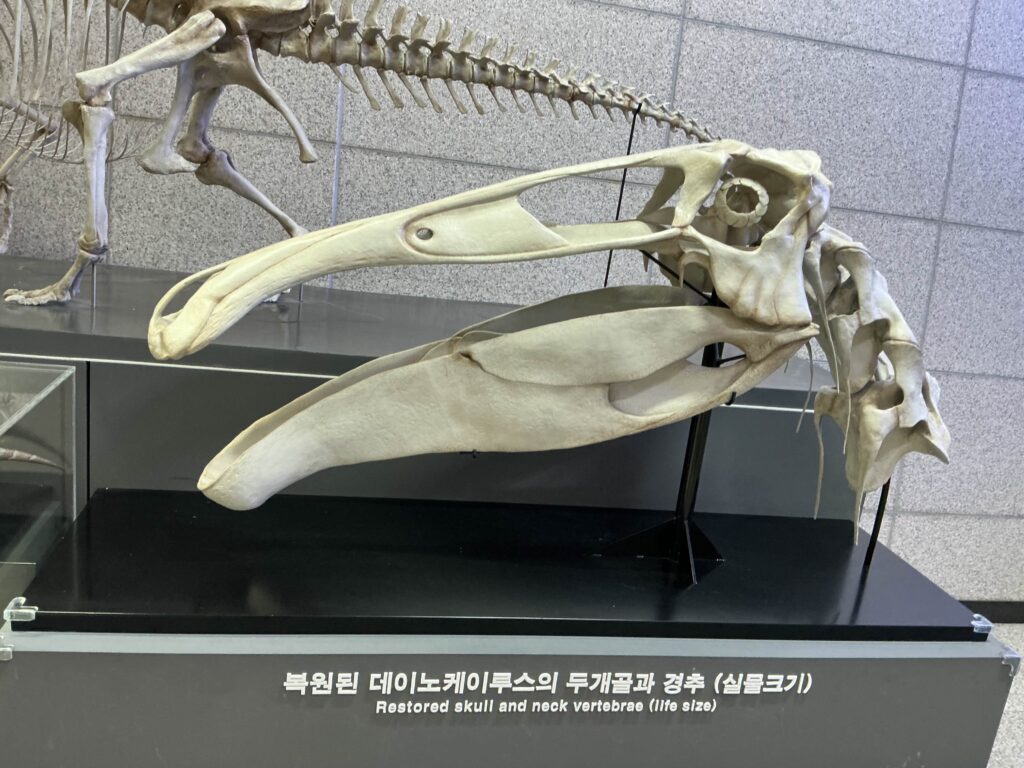
For nearly fifty years, Deinocheirus mirificus was known only from a pair of massive 8-foot-long arms and shoulder girdle discovered in Mongolia in 1965. These enormous fossilized limbs, equipped with large claws, sparked wildly different interpretations of what the complete animal might have looked like. Some paleontologists envisioned a terrifying predator, while others suggested a peaceful plant-eater with specialized feeding adaptations. Without a complete skeleton, this “Frankenstein fossil” remained a tantalizing mystery until 2014, when additional specimens finally revealed the truth. Deinocheirus turned out to be even stranger than imagined – a humpbacked, duck-billed, omnivorous dinosaur with a sail-like structure on its back and a bizarre body plan unlike any other known dinosaur. This revelation demonstrates how fragmentary fossils can lead to decades of scientific speculation and ultimately surprise even the experts when more complete remains are discovered.
Pakicetus: Whale Ancestors on Land
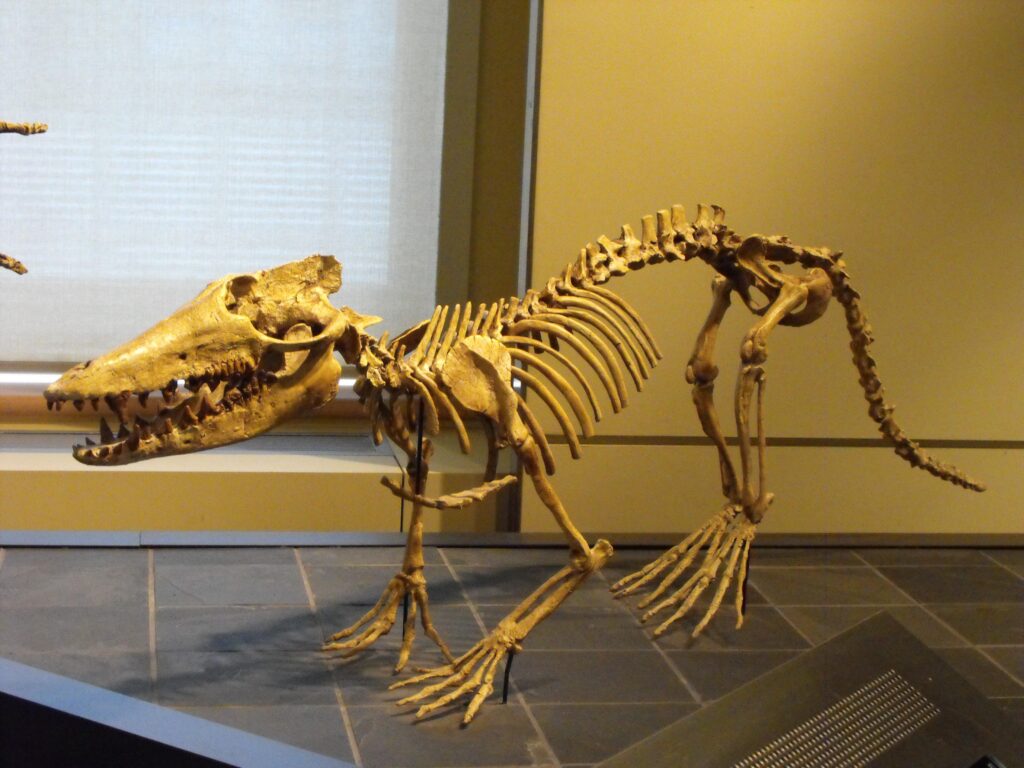
When initially discovered in Pakistan in 1981, Pakicetus was known only from a partial skull that combined features of both land mammals and aquatic cetaceans. This “Frankenstein fossil” presented a paradox – whale-like ear structures in what appeared to be a terrestrial animal. For years, reconstructions varied wildly, with some depicting it as a semi-aquatic creature similar to a crocodile. When more complete fossils were eventually found, Pakicetus was revealed to be a wolf-sized, four-legged land animal that spent most of its time on terra firma, only occasionally venturing into shallow water. Despite its terrestrial lifestyle, subtle anatomical features in its skull confirmed its place as one of the earliest ancestors of modern whales. Pakicetus represents a crucial piece in understanding one of evolution’s most dramatic transformations – how land-dwelling mammals returned to the sea and evolved into the dolphins and whales we know today.
Helicoprion: The Spiral-Toothed Mystery

For over a century, the bizarre spiral-shaped fossil known as Helicoprion baffled scientists who couldn’t determine how this structure fit into any known animal. This coiled arrangement of teeth, resembling a circular saw blade, was variously interpreted as an external defensive structure, a specialized fin spine, or even a strange ammonite. Early reconstructions placed this spiral in wildly different positions – on the snout, back, or tail of a primitive shark-like fish. Only in the 21st century did CT scanning technology finally solve the mystery, revealing that the spiral was a specialized lower jaw structure. Modern reconstructions show Helicoprion as a cartilaginous fish related to modern ratfish, with the tooth spiral located inside its lower jaw like a buzzsaw. This 270-million-year-old creature used its unique dental adaptation to slice through the soft bodies of prehistoric squid, representing one of evolution’s most unusual feeding adaptations.
Longisquama: The Contested Glider
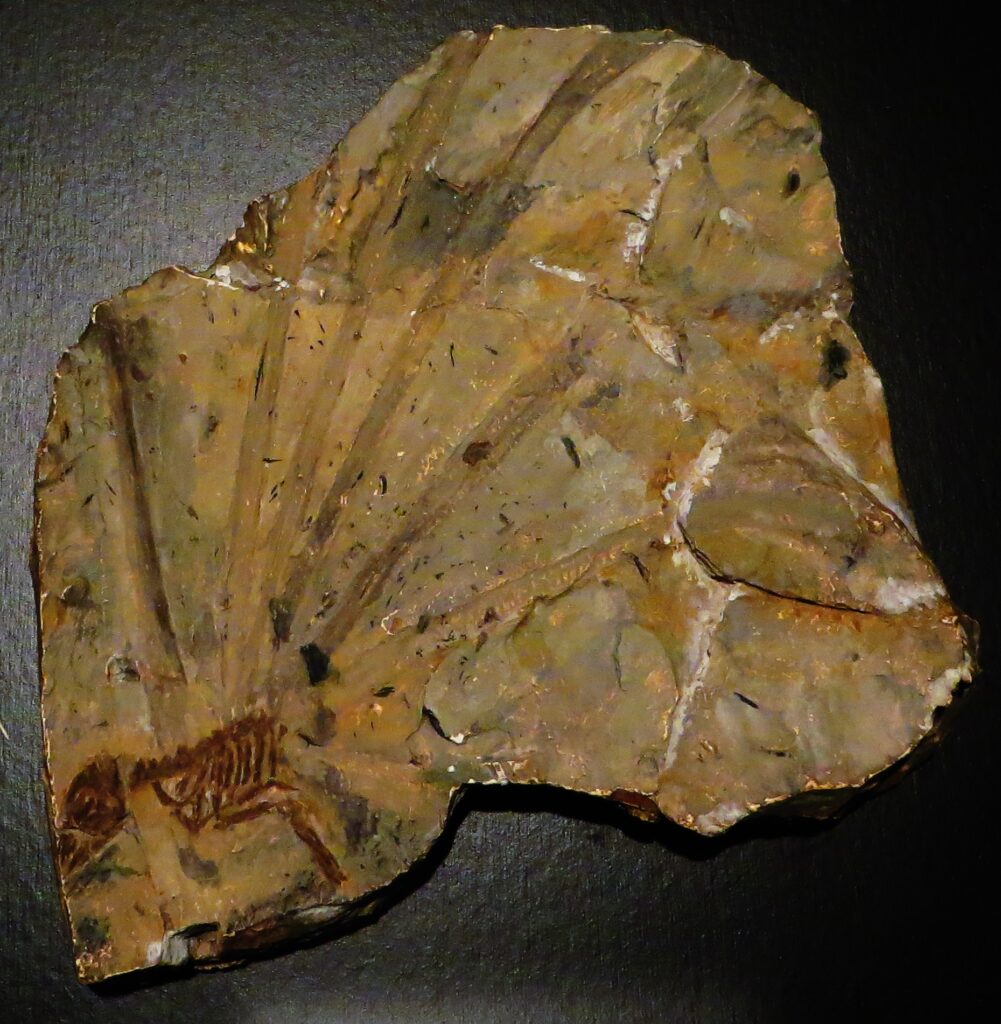
Discovered in Kyrgyzstan in 1969, Longisquama instantly became a contentious “Frankenstein fossil” due to its peculiar elongated structures that appeared to be feather-like scales projecting from its back. Some paleontologists interpreted these as primitive feathers, suggesting Longisquama might represent an ancestor of birds or evidence that feathers evolved in reptiles before birds. Others maintained these structures were modified scales or plant material that had been misinterpreted. The single, poorly preserved specimen has been examined and reexamined for decades, with some researchers even questioning whether all the parts belong to the same animal. The controversy intensified when some claimed Longisquama showed birds might have evolved from non-dinosaurian reptiles, challenging the now well-established dinosaur-bird connection. Despite multiple analyses, Longisquama remains enigmatic, demonstrating how a single ambiguous fossil can generate decades of scientific controversy.
Titanis: The Terror Bird That Wasn’t Quite Right
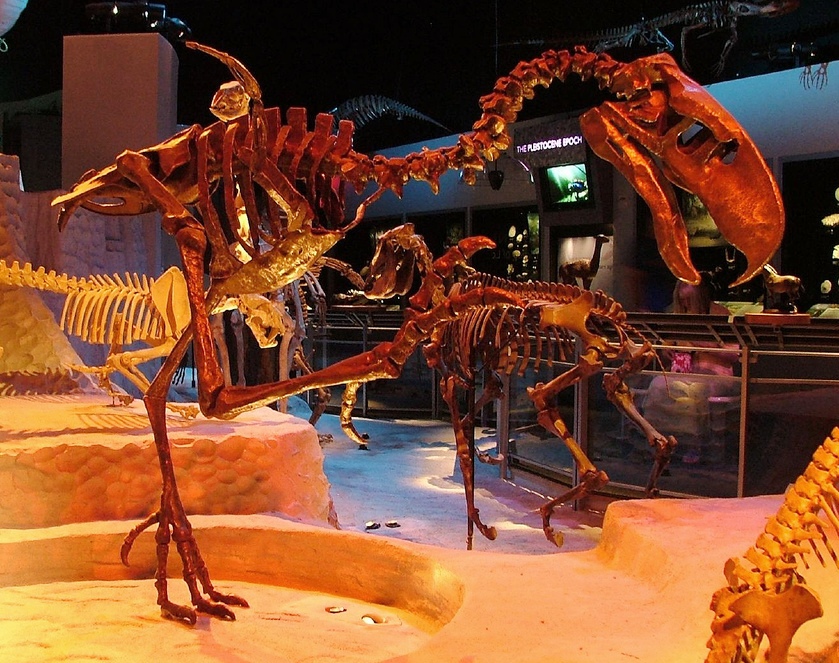
When paleontologists first attempted to reconstruct Titanis walleri, one of the last surviving terror birds that roamed North America until about 2 million years ago, they created a “Frankenstein fossil” by misinterpreting its forelimbs. Early reconstructions gave this flightless predatory bird grasping, claw-like hands unlike anything seen in modern birds, suggesting it used these appendages to grab prey. This unusual feature made Titanis seem even more terrifying than its already impressive 8-foot height and massive hooked beak would indicate. However, subsequent discoveries and reanalysis of the fossils showed that Titanis had typical avian wings, albeit reduced ones, rather than grasping hands. This correction highlighted how easily fragmentary fossils can lead to misinterpretations that create seemingly impossible creatures. Despite this revision, Titanis remains impressive enough without fabricated features – a giant carnivorous bird that likely chased down early mammals across prehistoric Florida and Texas.
Opabinia: The Five-Eyed Anomaly

When paleontologist Harry Whittington presented his reconstruction of Opabinia to colleagues in 1972, the audience reportedly burst into laughter at what appeared to be an impossible creature. This 500-million-year-old Cambrian animal featured five eyes on stalks, a frontal proboscis resembling a vacuum cleaner hose, and a segmented body with swim flaps – a combination so bizarre it seemed like a paleontological joke. Despite initial skepticism, further study confirmed Whittington’s interpretation was largely correct. Opabinia represents one of the strange evolutionary experiments from the Cambrian Explosion, when animal body plans were diversifying rapidly. Initially difficult to classify in any known group, researchers now believe Opabinia was related to arthropods, though its exact position remains debated. This genuine “Frankenstein fossil” reminds us that evolution has produced creatures far stranger than anything we might imagine, particularly during the early diversification of animal life.
Tanystropheus: The Impossible Neck
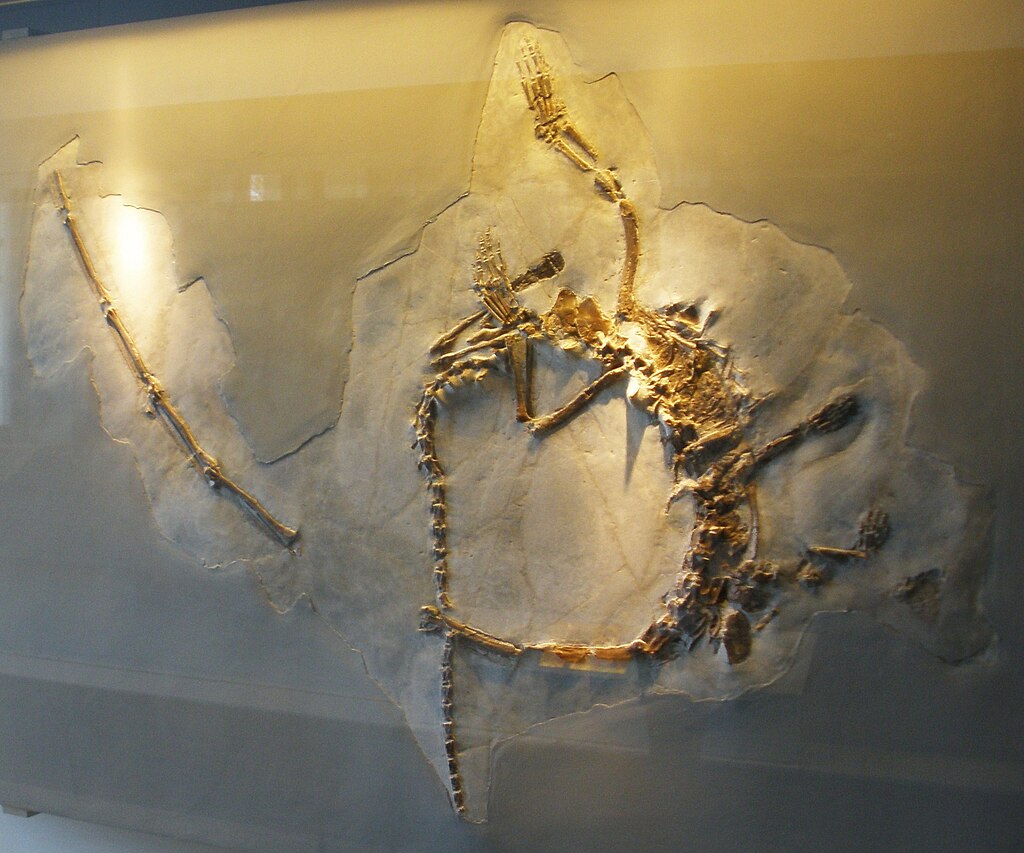
When the first fossils of Tanystropheus were discovered in the 19th century, paleontologists were so baffled by its extraordinarily long neck vertebrae that they initially misidentified them as wing bones of a pterosaur. Only when more complete specimens were found did the true nature of this Triassic reptile become apparent – a creature with a neck three times the length of its body. This seemingly impossible body proportion led to decades of debate about how Tanystropheus could have functioned in life. Some proposed it was aquatic, using its neck like a fishing rod while keeping its body on shore. Others suggested it was fully marine, using its neck to probe crevices for prey. Recent research indicates Tanystropheus was indeed marine-adapted, with different species specializing in different diets. The extreme specialization of Tanystropheus demonstrates how evolution can produce body plans that seem biomechanically implausible but function effectively in specific ecological niches.
Chilesaurus: The Plant-Eating Predator
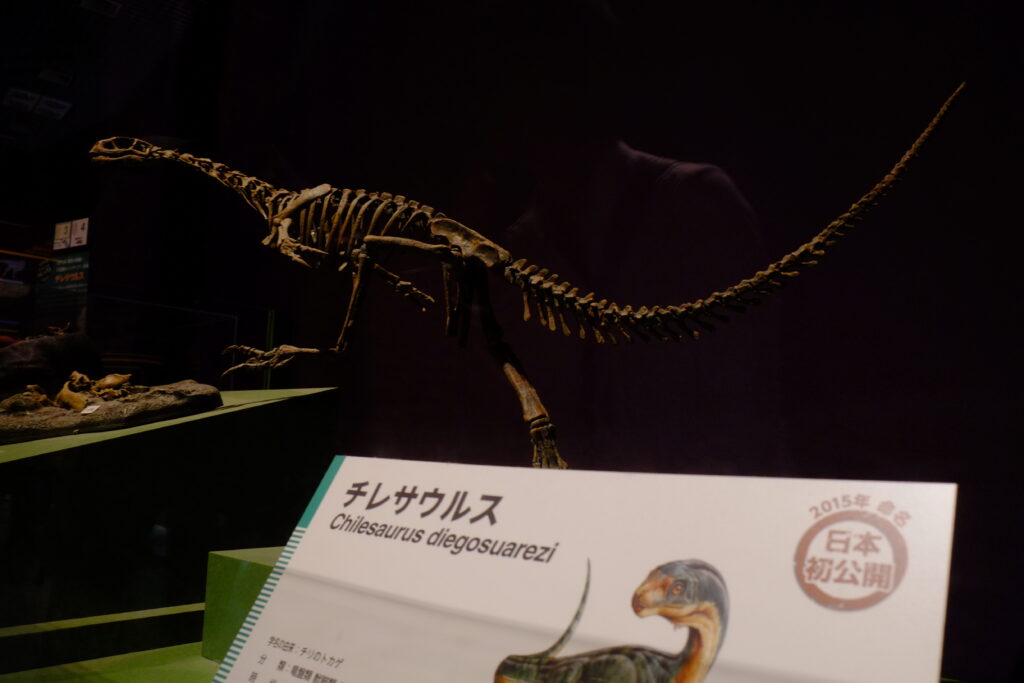
Discovered in Chile in 2004, Chilesaurus diegosuarezi represents one of the most peculiar dinosaur “Frankenstein fossils” to emerge in recent decades. This Jurassic dinosaur combines features from multiple, unrelated dinosaur groups in ways that initially left paleontologists deeply confused. While it belongs to the primarily carnivorous theropod group that includes Tyrannosaurus and Velociraptor, Chilesaurus evolved a beaked, plant-eating apparatus more similar to those of long-necked sauropodomorphs and ornithischian dinosaurs. Its hands featured just two functional fingers rather than the typical three of most theropods, and its pelvis resembled that of ornithischian dinosaurs rather than its actual theropod relatives. After extensive analysis, scientists determined Chilesaurus represents an early example of convergent evolution, where a theropod lineage independently evolved plant-eating adaptations similar to those in unrelated herbivorous dinosaurs. This “vegetarian predator” highlights how drastically a lineage can deviate from its ancestral body plan when adapting to new ecological niches.
The Modern Approach to Paleontological Puzzles

Today’s paleontologists have technological advantages their predecessors could only dream of when tackling “Frankenstein fossils.” Advanced imaging techniques like CT scanning can reveal internal structures without damaging specimens, while scanning electron microscopy allows examination of microscopic details that might resolve taxonomic questions. Sophisticated phylogenetic analysis software helps determine evolutionary relationships by comparing hundreds of anatomical features across numerous species simultaneously. Additionally, techniques like ancient DNA analysis, though limited to relatively recent fossils, can sometimes resolve questions of relationship where anatomy alone proves ambiguous. Despite these advances, the fundamental challenges remain – incomplete preservation, convergent evolution, and truly unusual animals that don’t fit neatly into established categories. Modern paleontologists increasingly embrace this ambiguity, recognizing that these puzzling fossils often reveal important information about evolutionary transitions and experimentation. Rather than forcing specimens into existing categories, scientists now focus on understanding the unique adaptations and evolutionary stories these “Frankenstein fossils” represent.
Why “Frankenstein Fossils” Matter to Science
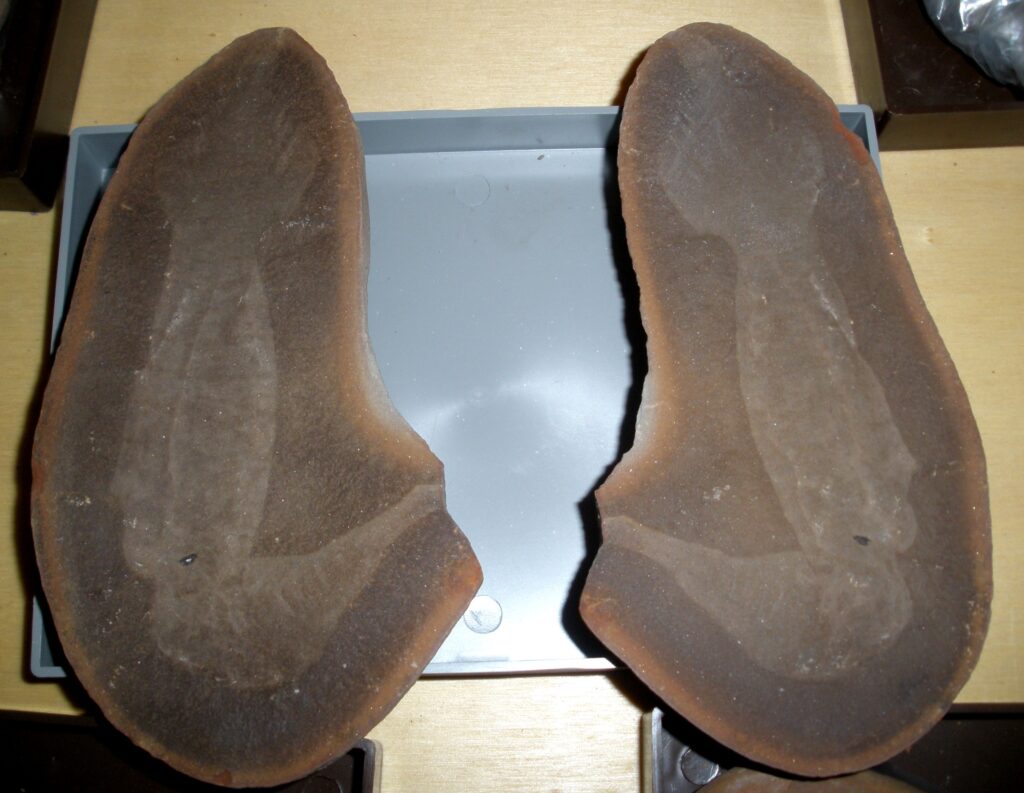
Far from being mere curiosities, these perplexing specimens often become pivotal to advancing scientific understanding. “Frankenstein fossils” frequently represent transitional forms or evolutionary experiments that challenge our understanding of how major animal groups evolved and diversified. They highlight the non-linear, sometimes messy nature of evolution, where features can evolve independently multiple times or ancient groups may display unexpected combinations of traits. These fossils also serve as reminders of scientific humility – even experienced paleontologists can be surprised by nature’s creativity. The debates surrounding these specimens drive innovation in research methods as scientists develop new techniques to extract maximum information from difficult material. Perhaps most importantly, these fossils capture public imagination, drawing attention to paleontology and evolution in ways more conventional specimens cannot. When a truly bizarre fossil makes headlines, it creates opportunities for science communication about evolutionary processes and the nature of scientific inquiry itself.
The Future of Fossil Mysteries

Despite centuries of fossil collecting and decades of modern paleontological research, new “Frankenstein fossils” continue to emerge from rocks around the world. Regions with limited previous exploration, like parts of China, Argentina, and Antarctica, regularly yield new specimens that challenge existing classifications. Even well-studied formations occasionally produce unexpected discoveries when examined with fresh eyes or new techniques. As climate change accelerates erosion in some regions, previously buried fossils are becoming exposed, promising more paleontological puzzles in the coming decades. Simultaneously, emerging technologies like artificial intelligence for image analysis, advanced chemical techniques for analyzing fossil preservation, and improvements in ancient protein recovery may help resolve some long-standing mysteries. The most exciting prospect, however, may be discovering entirely new types of “Frankenstein fossils” – creatures so unexpected they force wholesale reconsideration of evolutionary relationships or reveal adaptations no one had previously imagined possible. In paleontology, the most important discovery is always potentially the next one.
Conclusion
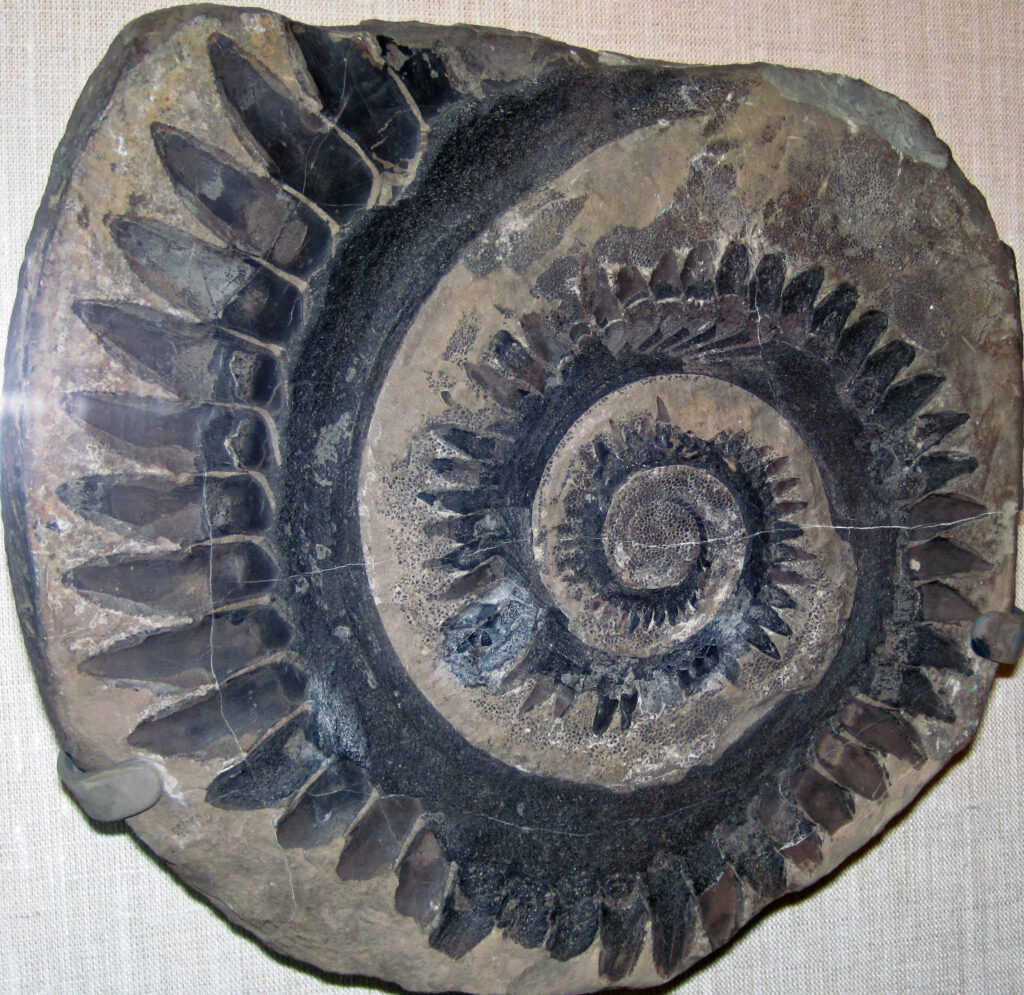
The “Frankenstein fossils” that continue to baffle scientists represent more than just challenging specimens – they embody the dynamic, sometimes messy nature of evolution and the ongoing development of scientific knowledge. From the upside-down Hallucigenia to the buzzsaw-jawed Helicoprion, these paleontological puzzles remind us that life’s history contains chapters stranger than fiction. While some mysteries have been resolved through persistent research and technological advancement, others continue to generate heated debate among experts. Rather than viewing these enigmatic specimens as problems to be solved, modern paleontologists increasingly appreciate them as windows into evolutionary experimentation and reminders of nature’s boundless creativity. As new analytical techniques develop and unexplored regions yield their fossil treasures, we can expect more biological Frankensteins to emerge from the rock – each one challenging our understanding and expanding our appreciation for the remarkable diversity of life throughout Earth’s history.

